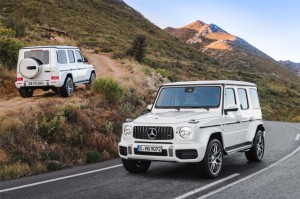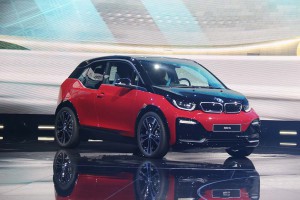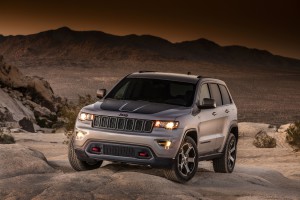This story has been updated.
Gas prices are on the rise this year, nearly hitting $3 per gallon on average across the U.S. However, even as new vehicle buyers continue to gravitate toward utility vehicles, knowing how much you might spend on filling the tank is helpful.
To make that task easier, the Car Book released its annual list of most and least fuel efficient new vehicles. The lists primary requirement is that anything on the most efficient list must average 40 mpg or better while the least efficient vehicles must average 15 mpg or less.
“Survey data also shows that consumers understand the volatility of gas price, and they believe the cost of gas will go up during the time they own their new car,” said Jack Gillis, publisher of The Car Book.
(U.S. seeing gas prices rise across the country. Click Here for the story.)

The Mercedes-AMG G63 features several distinctive design details, including its gas-guzzling engine.
The top 10 most fuel efficient vehicles for 2018:
- BMW i3
- Chevrolet Bolt
- Hyundai Ioniq Electric
- Fiat 500e
- Nissan Leaf
- Kia Soul Electric
- Tesla Model S
- Tesla Model X
- Tesla Model 3
- Toyota Prius eco
Others that fit in the category included the rest of the Prius line-up, and six Toyotas overall when you add in the Camry, Avalon and Lexus ES hybrid models. Ford Motor Co. had five models counting the Lincoln MKZ Hybrid. Chevrolet and Tesla both had three entries while Kia had two.
(Click Here for more on rising demand, shrinking supply causing surge in fuel prices.)
The top nine least efficient models included:
- Mercedes-AMG G 63
- Lexus LX 570
- Dodge Durango SRT
- Jeep Grand Cherokee SRT
- Mercedes-Benz AMG GLE 63
- Chevrolet Camaro ZL1 (manual)
- BMW M6 Convertible
- Chevrolet Camaro ZL1 (automatic)
- Mercedes-AMG SL 65
Not surprisingly it was sports cars and large utility vehicles that topped the list. Overall, Toyota topped this list as well with six vehicles, including its luxury ute, the Lexus LX 570. Chevrolet wasn’t far behind with five, including the Chevrolet Corvette. Fiat Chrysler had four entries.
In addition to the fuel-economy numbers, The Car Book provides a variety of other information to help potential buyers whittle down their choices until they can find the vehicle that best suits their needs and lifestyle.
(Motorists want calmer more comfortable commutes, finds new study. Click Here for more.)
“For 38 years my goal with The Car Book has been to provide all the information consumers need to make an informed, safe and reliable vehicle purchase,” said Gillis, a noted consumer advocate and auto safety expert. “Perhaps most importantly, the information presented is totally unbiased and advertising free.”



Why is the Camaro listed twice?
Another question I had. It’s the ZL1 manual and automatic, which get different EPA ratings. MAS.
I guess the idiots that publish The Car Book think the energy that generates electricity comes from pixie dust.
“Gillis, a noted consumer advocate and auto safety expert.”
What makes Gillis a safety expert? Did he develop the seat belt, the air bag, laminated safety glass, even the damn horn? No, he’s a blowhard who wrote a few books. That’s not an expert in my view.
Dick, we appreciate your comments but for those that question your own expertise, could you provide your background? Thanks!
Paul E.
Either Mr. Gillis or Mr. Strong confused the Grand Cherokee trim levels. It’s the TrackHawk, not the TrailHawk which gets the dismal fuel economy. I also thought it was odd the Car Book chose to not include pick-ups. Thanks
To be clear, Mr. Strong was confused because I couldn’t see how it would be the Trailhawk either. However, there is a version of the Trailhawk with a 5.7-liter V8 that gets 14 mpg in the city, so I gave them the benefit of the doubt, while awaiting a response to the question, “Do you mean TrackHawk?” The answer I received this morning didn’t really clear up the issue so I simply removed it from the list and noted the story has been updated.
Thank you for clarifying the Camaro question in your updated version.